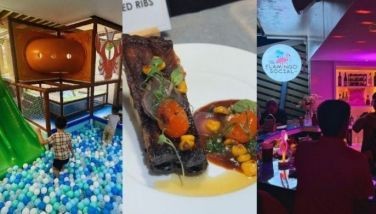A selection of ornamental aloes
Aloes are a widely-cultivated genus of succulent plants containing about 400 or so species. Aloes are generally native to Africa, with epicenters in South Africa, Madagascar, and some parts of tropical Africa. Aloes can also be found in the Arabian peninsula and the islands off Africa.
When one thinks of Aloes, the plant that comes to mind is the famous medicinal and hardy Aloe vera. Many health and personal care products already contain the extracts from the Aloe vera. The plant itself is quite hardy and is able to grow successfully in our tropical climate. I will talk about Aloe vera and other medicinal aloes in the future. (Yes, there are other Aloe species which have fantastic medicinal qualities, and some of these are arguably more potent than the Aloe vera in terms of efficacy and healing/restorative power! But more on this in a future article.)
The focus of today’s piece is on a selected number of aloe species valued for their beauty and ornamental value. Aloes are closely allied with my other favorite succulent genera, namely, Haworthias and Gasterias. Most Aloes have a rosette of large, thick, fleshy leaves, although there are some exquisite species with grass-like leaves and are more specifically referred to as Grass Aloes. The flowers of this genus are tubular and the colors range from red to pink to yellow.
While most species are stemless, others form branched or unbranched stems from which the leaves are produced. There is also a nice variation in coloration. Some are bright-green, others have a powdery bluish coating on the leaves. Others have greyish tones, while others have striped or mottled leaves. Some appear almost white in coloration. Aloes vary in size from dwarfs and miniatures which grow nicely in a four-inch pot, to giant trees reaching over 20 feet in height.
Most Aloes are quite easy to cultivate as long as they are given a lot of direct sunlight, ample water, and good ventilation. In my experience, Aloes won’t flower without good  sunlight. With a growing medium of 1/3 good garden loam, 1/3 well-rotted compost, and 1/3 washed sand or pumice, plants can be watered twice a week. During especially hot days in the summer, watering even three times a week shouldn’t pose any problems.
sunlight. With a growing medium of 1/3 good garden loam, 1/3 well-rotted compost, and 1/3 washed sand or pumice, plants can be watered twice a week. During especially hot days in the summer, watering even three times a week shouldn’t pose any problems.
Six distinct Aloes are showcased in today’s article. Examples are presented from the geographic range of Aloes across Africa and the Arabian Peninsula. Among the six selected ornamental Aloes are natural miniatures, species which mimic grass in their natural habitats, and arborescent or tree-growing Aloes.
Aloe armatissima is one of the few Aloes found outside the African Continent. It is endemic to Saudi Arabia. Its fat, mottled leaves are highly decorative and prized by collectors. In the wild, it survives in very hot, dry environments, but in cultivation, it can be grown like most Aloes.
Aloe boylei is one of a group referred to as Grass Aloes because of their narrow, grass-like leaves. Grass Aloes are deciduous and, as the name implies, grow mainly in grasslands. Their leaves and colors resemble their habitat, making them difficult to locate when these are not in flower. Most Grass Aloes are miniatures with very attractive flowers. These Aloes are more difficult to cultivate than other Aloes and require greater care with watering. Grass Aloes are well adjusted to survive in their habitat. A grassveld is set on fire by lightning during thunder- storms on a regular basis, but the Grass Aloes survive as the short stem and the top part of the roots are filled with water. Charles Craib, a famous succulent and flora explorer and writer, has written an excellent book entitled Grass Aloes in the South African Veld. This is a must reading for those who are interested in this particular group of highly desirable Aloes.
Aloe calcairophila is one of the choice and slow-growing miniatures with distichous (fan-shaped) rosettes of leaves and urceolate (urn-shaped) white flowers, though with ample light, the buds may be red at first. As its name indicates (calcair = lime, phila = loving), it exhibits a preference for lime-bearing substrates. Depending on the quality of one’s water (i.e., if excessively acidic), it might be helpful to add some agricultural lime to one’s mix. More importantly, in cultivation, the plants seem to prefer shade. This miniature Aloe is found only in Madagascar.
 Aloe compressa v. compressa, another Aloe endemic to Madagascar, is a drought-resistant species, which thrives in full sun. It is found in Fianarantsoa, Atananarivo in Central Madagascar at 3,500 to 5,000 feet elevation.
Aloe compressa v. compressa, another Aloe endemic to Madagascar, is a drought-resistant species, which thrives in full sun. It is found in Fianarantsoa, Atananarivo in Central Madagascar at 3,500 to 5,000 feet elevation.
Aloe erinacea has to be one of the all-time favorite Aloes. If there is only one Aloe you want in your collection, then this is the species to own. It is found in the subtropical and tropical dry shrubland and rocky areas in Namibia, occurring in the higher northern mountains where it forms clumps in time. Only recently discovered (botanically, that is) in the mid 1980s in Namibia, it seems strange that such an impressive plant could have remained unknown for so long. Fortunately for collectors, enough seed was collected and distributed in the early 1990s that a reasonable number of plants now exist in cultivation. It grows very slowly, especially for an Aloe. This is one of its appeals for the collector.
Aloe suzannae is a recently “rediscovered” species that has been and continues to be threatened in its native south and southwestern Madagascar. It is an arborescent, or tree-like, Aloe and can grow quite tall and large. Aloe suzannae is one of the species being targeted for conservation in Madagascar. This large succulent is prized by collectors and thought to be on the brink of extinction. The species is only known from a few specimens collected more than 50 years ago from areas that have subsequently suffered considerable degradation to the natural vegetation.




















